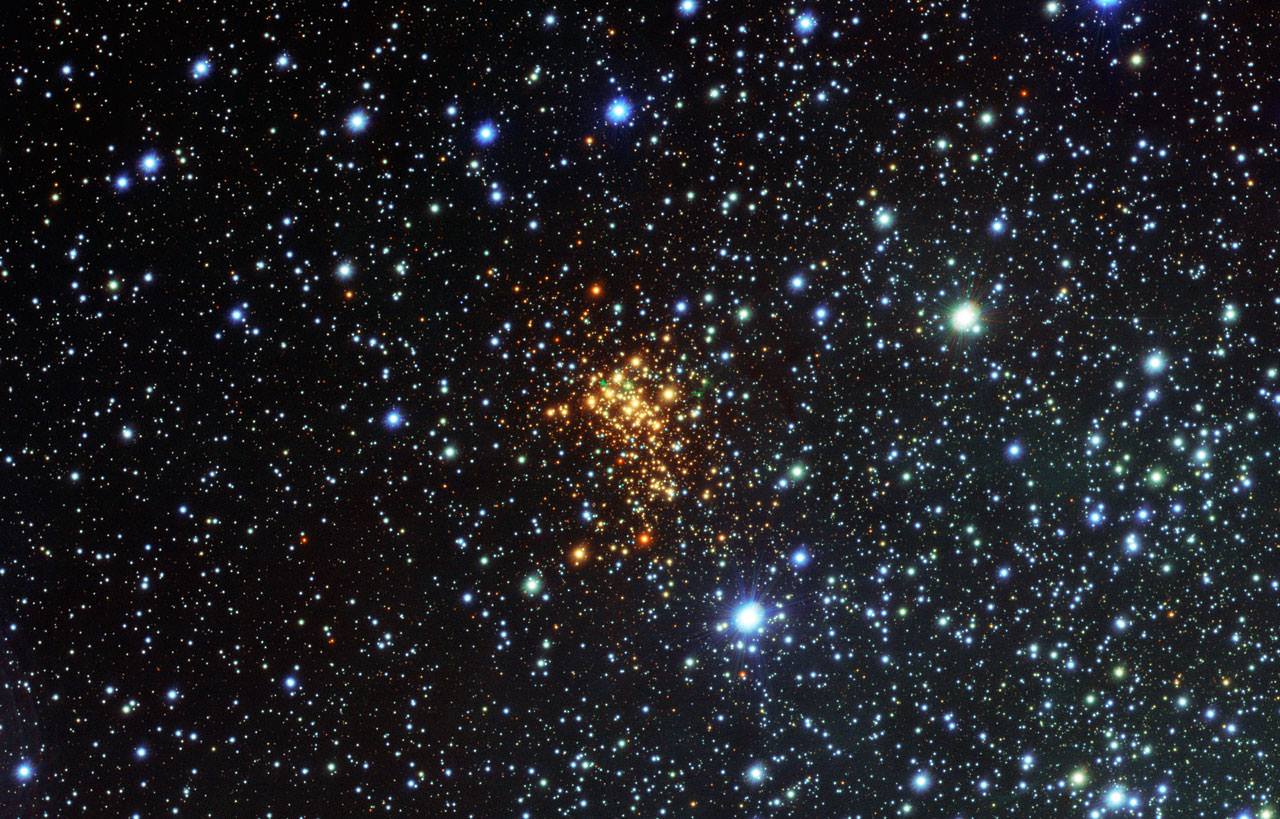The largest stars in the universe tend to be loners, and new research points to the reason why. Although massive stars are born in clusters of many smaller brethren, they quickly get kicked out, forced to spend their lives alone.
Stars tend to come in clumps. That’s because when a massive cloud of gas and dust collapses to form stars, it has more than enough to form an entire cluster, containing both big ones and little ones.
Once formed, the brightest stars in the cluster clear away any remaining debris through the intensity of their radiation, leaving behind what’s known as an open cluster. Open clusters are bunches of newly-hatched stars that are no longer gravitationally bound. Over time they’ll slowly float away from each other, dispersing themselves through the galaxy.
But first, the gravitational interactions of the smaller stars conspire together to kick out the massive stars, sending them on high-velocity tracks far away from the cluster in record time.
This is the story presented in work recently appearing in The Astrophysical Journal, explaining why up to 75% of stars heavier than 8 solar masses are not found in association with any other stars, unlike their smaller cousins.
To test whether massive stars really do form in isolation (“in the field” in astronomy jargon), the team behind the paper also looked for massive stars that were surrounded by a retinue of smaller stars. They found that less than 5% of massive stars had such a retinue.
Since if a random gas cloud has enough material to make a giant star, it almost certainly has enough stuff to also make a few smaller ones, this result suggest that less than 5% of massive stars indeed form in the field, and were really once members of a much larger association.
The results have important implications for our understanding of how all stars (both big and small) form, and more importantly how they live their lives.

